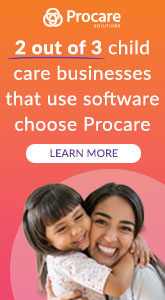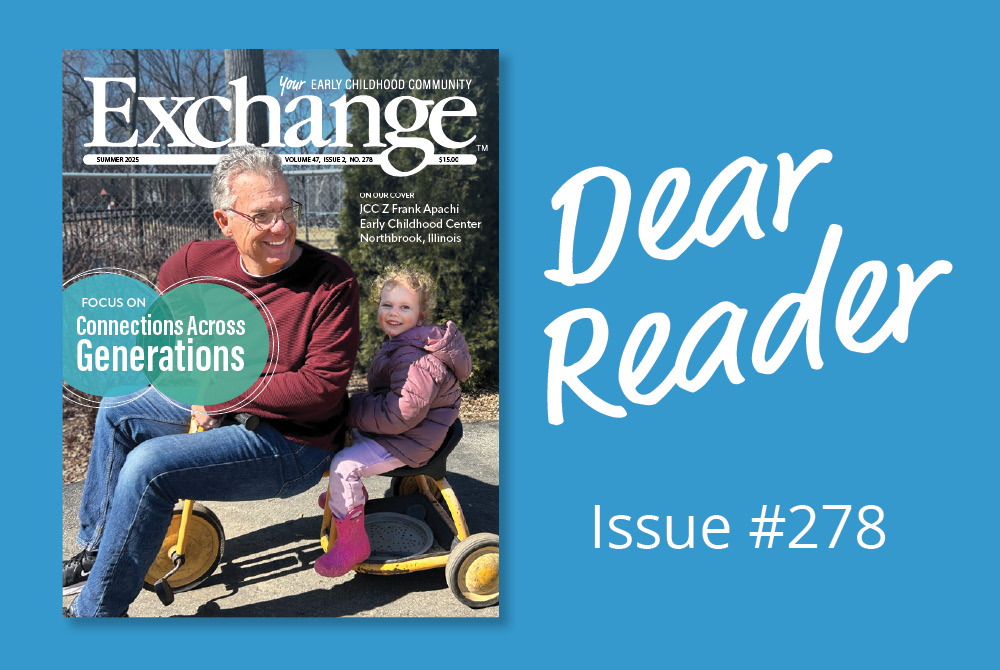Hello, my name is Binta Dixon, and by the time you read this, I’ll be four months into my role as editor of Exchange. At this stage of my journey, I am overflowing with questions. One of them is what it means to be the third ever editor of a publication with an impact on early care and education that goes back decades. What do we, the community of Exchange, want this new era to feel like?
I feel a deep sense of responsibility and charge in taking on the work of stewarding Exchange Press. I’m neither a parent nor have I worked as a lead educator nor studied early care at the graduate level. I’m a gardener, a writer, an editor, a former community programs coordinator, and a community manager deeply rooted in a strong cultural heritage and community that includes plants, animals, and many different bodies of culture. I’ve committed the last decade to helping mission-driven organizations and start-ups provide vital resources to families and tell the stories of their work that bridge purpose and practice. These experiences helped get me to this place and deeply inform my perspective as a leader.
Yet, what feels most true to the “why” of this work for me is my relationship with my mom.
My mom, Norma, was an early care educator and director for over 35 years. She created a care center in our home, and after endless long weekends, week-long trainings, observations, and testing, she opened a small, nature-focused Montessori school in Charlotte, NC. She was the lead teacher, administrator, director, and parent coordinator for the 8-12 children she accepted into the school each year.
I watched her work with community organizations, local businesses, families, and hundreds of children over the years. She was and still is an incredible teacher and a wildly creative person. She taught me why building strong networks of care is essential and how to use my creativity to create change in my local environment.
I also saw how challenging her role was: the difficult conversations she had with her parents, the pressure to be less explicit about her commitment to racial and cultural diversity within her school, the racism and sexism she encountered as a Black woman business owner, the financial difficulties of running a program that offered scholarships to families in need, and keeping up with the regulatory requirements that seemed to change every year. I witnessed her resilience, determination, and capacity to work with challenging partners to accomplish a common goal.
ADVERTISEMENT
She often reminded me that a unique combination of compassion, creativity, and action is required to be the change in the world.
I want for every early care professional what I wanted for my mom: a community of support that uplifts, respects, and shares in the difficulties and joys of early care.
Early care practitioners and leaders enable young children to venture into new experiences and growth in safe and supportive environments daily.
When we give young children opportunities to engage in art practice, they expand the world to fit their limitless imaginations. Creative experiments with choice, color, texture, and sound help set the stage for new layers of curiosity.
In this issue, we explore the practice and experience of art within early care environments. Introducing our youngest learners to The Arts—music, painting, drawing, sculpting, and writing—can open doorways to their natural talents and strengthen their capacity to notice, sense, and feel.
Our world is in critical need of creative action. Conflict, devastation, and polarization are not new, yet we are in a time where technology allows us to witness horrors on an incomprehensible scale. At times, it can feel like a machine is running that no one can stop. I have sometimes felt numb before quickly calling my heart back because I believe in the human capacity for creativity and change.
Artistic expression and storytelling are two powerful antidotes for apathy. Engaging in creative play is one way to subvert, resist, question, and connect across vastly different life experiences. When given the tools and the space, children know how to create fresh ways of relating and being in the world, and they are often more than willing to share. In this way, opening to their creative
expression is medicine for all of us.
Editor of Exchange Press.
Related
ADVERTISEMENT












